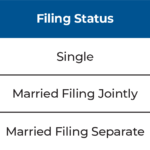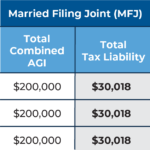From time to time, individuals (typically high-income) can make after-tax contributions to traditional retirement accounts that are usually designated for pre-tax funds. No deduction is received for these contributions because the contributions have already been taxed and should not be taxed again. To avoid such double taxation, however, the after-tax contributions must be recorded properly, and those records must be adequately maintained. This is particularly important when after-tax amounts end up in Traditional IRAs.
After-tax contributions can make their way into Traditional IRAs via two separate routes, either via direct contributions of after-tax amounts or through rollovers of after-tax dollars previously held in an employer-sponsored retirement plan. Critically, while many taxpayers think that their IRA custodian is keeping track of the after-tax amounts they have in their Traditional IRA, it is, in fact, the taxpayer who is responsible for doing so. Specifically, taxpayers are required to file Form 8606, Nondeductible IRAs, to keep track of such amounts. Sometimes, for numerous reasons, taxpayers may fail to file Form 8606, which can result in basis being ‘lost’. Yet filing Form 8606 does not always capture IRA basis, as it is only required either when after-tax amounts go into the Traditional IRA (via a nondeductible contribution or a rollover of after-tax funds from employer-sponsored retirement plans) or when after-tax money is distributed from a Traditional IRA (including a Roth conversion).
Accordingly, there can be gaps between these actions with long periods of time during which Form 8606 is not required to be filed. In the interim, various events, such as changing CPAs or the death of the client, can lead to a previously filed Form 8606 being ‘forgotten’, resulting in a similar outcome to having never filed the form in the first place! One way to dramatically reduce the likelihood of properly reported basis being forgotten is by filing Form 8606 every year regardless of whether it is required. This way, a taxpayer can be sure that their cumulative IRA basis will always be available on their most recent income tax return.
In the event Form 8606 was not properly filed to begin with, basis can be reconstructed from scratch. To reconstruct nondeductible Traditional IRA contributions, taxpayers can find old Traditional IRA account statements showing contributions, past years’ Form 5498 (Individual Retirement Arrangement Contribution Information), or Form 1099-R (Quantifying And Proving Prior Years’ Nondeductible IRA Contributions) that report such amounts. Alternatively, they can also request a Wage and Income Transcript from the IRS. All of these could be used to prove that a contribution to a Traditional IRA was made. And if a contribution to a Traditional IRA was made with no deduction taken, which can be verified with copies of the relevant tax returns or by requesting Return Transcripts to the extent that such returns were otherwise unavailable, the amount is a verified nondeductible contribution!
Ultimately, the key point is that taxpayers may still be able to deduct tax-free distributions, even if they have ‘lost track’ of the basis in their Traditional IRA accounts. By turning to a multitude of resources to help identify the nature of their retirement account contributions and rollovers, financial advisors can help prevent the double taxation of after-tax contributions made to clients’ retirement accounts!





 Welcome back to the 227th episode of the Financial Advisor Success Podcast!
Welcome back to the 227th episode of the Financial Advisor Success Podcast!



 Welcome back to the 226th episode of the Financial Advisor Success Podcast!
Welcome back to the 226th episode of the Financial Advisor Success Podcast!
